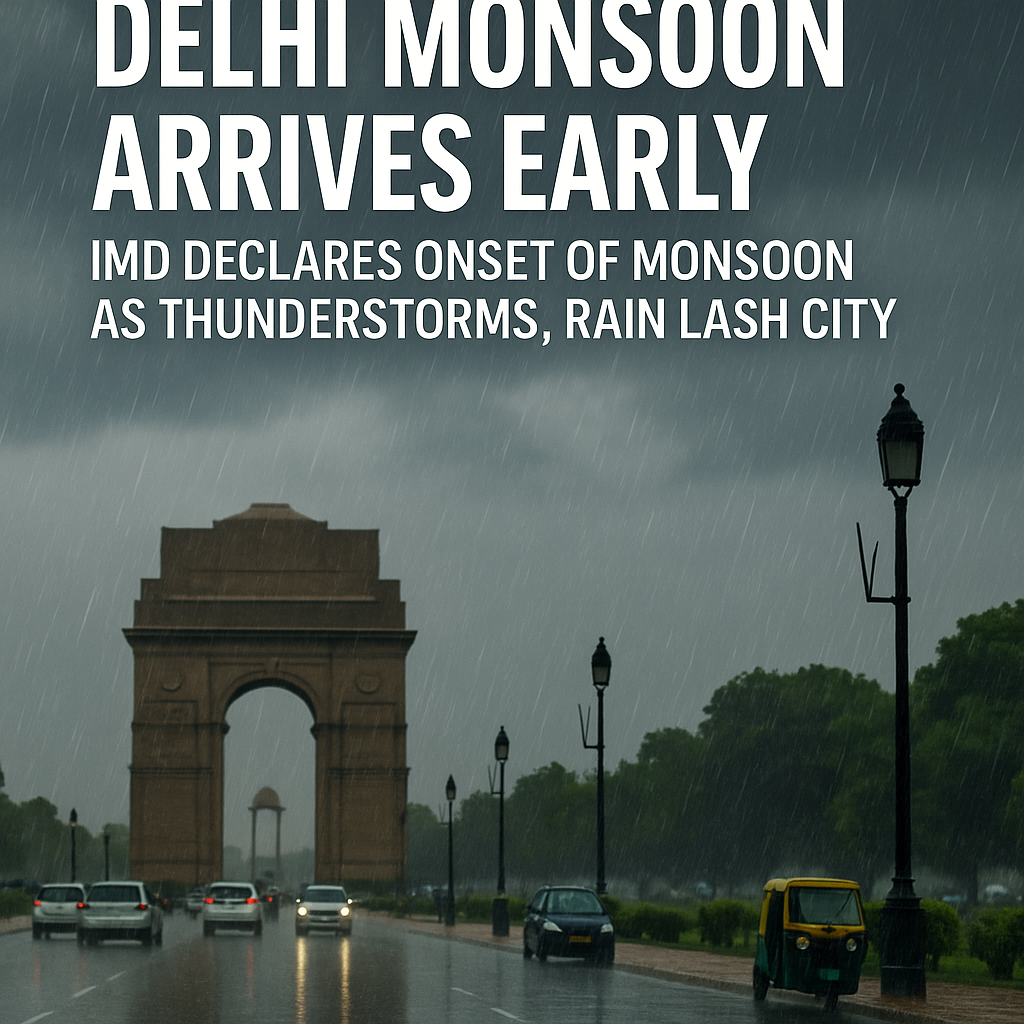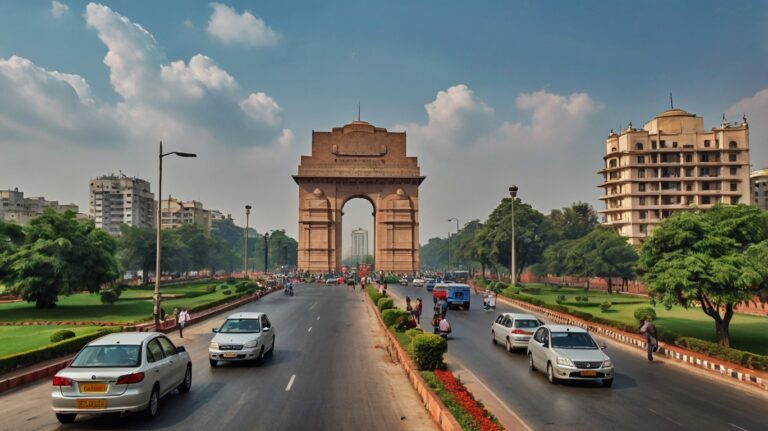
The monsoon has officially arrived in the national capital, bringing much-needed relief from the summer heat. The India Meteorological Department (IMD) confirmed that the Southwest Monsoon advanced further into Delhi, Rajasthan, Haryana, and West Uttar Pradesh, covering the entire country by June 29, 2025—a full nine days ahead of the usual July 8 timeline.
As heavy clouds gathered over Delhi, moderate rain and thunderstorms lashed several parts of the city Sunday evening. The IMD has issued a yellow alert, warning residents to expect intermittent rain, lightning, and overcast skies for the rest of the day.
According to the latest updates, Delhi recorded a minimum temperature of 26.8°C on Sunday. In a rare welcome sign, the Air Quality Index (AQI) stood at 85, placing it in the “satisfactory” category, as per the Central Pollution Control Board (CPCB).
🔍 Air Pollution Linked to Post-Monsoon Health Risks
Meanwhile, a recent international study has drawn attention to a troubling trend affecting Delhi’s air quality after the monsoon season. According to researchers, smoke from stubble burning in Punjab and Haryana contributes to nearly one-third of PM2.5-related deaths in the capital during this period.
The study highlights how crop-burning smoke travels long distances and becomes the dominant source of organic aerosols, responsible for over 50% of the worst haze episodes, surpassing even vehicular and industrial pollution.
Short-term exposure to PM2.5 particles—tiny pollutants that penetrate deep into the lungs and bloodstream—was linked to around 6% of all annual deaths in Delhi and Kanpur, the report said.


